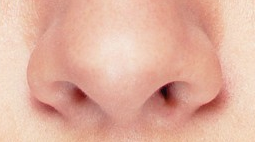London:The popularity of cosmetic surgery continues to grow. Aside from the medical risk that these invasive procedures pose and many do go wrong – do we really want to loose our personalities in the process?
We only have to look at the celebrity exponents of cosmetic procedures such as Joan Rivers, Anne Robinson, Cher, Dolly Parton, Jackie Stallone and the hideous looking Bride of Wildenstein to be convinced that cosmetic surgery should be the beauty treatment of last resort.
These days there are ever more sophisticated alternatives to cosmetic surgery utilising natural substances found in the human body, including collagen, hyaluronic acid, our own fat and cells, substantially decreasing the likelihood of nasty avoid allergic reactions, such as actress Leslie Ashs infamoustrout pout. There are also lasers and radio frequency treatments which stimulate the production of collagen, plumping out the skin. One of the most exciting new anti-ageing treatments for the face is Isolagen, in which a patients own cells are cultivated and reinjected into lines and wrinkles. Another is Thermage in which radio frequency is used to stimulate new collagen. The only downside to natural treatments is that they are financially high maintenance because the effects eventually wear off and regular treatments may be need to keep the effects.
There are now several clinics offering these treatments in the City so it is possible to have a lunch-time beauty fix. Although these procedures are usually non-invasive, they should still be carried out by a qualified medical doctor or by a nurse under the supervision of a doctor. Always ask about qualifications and inspect their public/professional liability insurance certificate so that you will at least have financial redress should anything go wrong. Also check if they are registered with the Healthcare Commission, although this is voluntary at the moment it does demonstrate a commitment to professional ethics.
Bioskin Jetting
BioSkinJetting is one of the newest non-surgical procedures and ideal for wrinkles and frown lines. A microprobe is used to separate the wrinkle from the underlying skin which stimulates the growth of new collagen fibres, plumping and firming the skin. Each treatment lasts between 15 to 40 minutes and can be taken individually or as part of a package. A 15 minute treatment for a forehead wrinkle would cost between £35 and £55 and a 40 minute treatment for say lines around the mouth of eyes is about £75-£100. A bonus is that the facial muscles can move freely and are not frozen, making the overall impression much more natural, yet younger looking.
Practitioner: Chandra Curniff at Elite Beauty Services, Suite 511, 5th Floor, 5 St Helen Place, Bishopsgate, London EC3 T: 020 7686 7234. Information: www.skinbysterex.com
Botox
Botox was first used to treat medical neurological conditions, such as facial spasms. In cosmetic treatments highly diluted doses are injected into the muscle causing it to relax, which softens lines and contours. The most popular areas to have treated are crow’s-feet, forehead lines, neck muscles, the corners of the mouth and upper lip lines. Several injections are usually needed at specific sites and may take a few days to take effect and lasts for about three months. Costs from £200 for each area treated.
Practitioners: Dr John Moran, 30A Wimpole Street, W1. T: 020 7935 4870 doctor@hmc-holistic.demon.co.uk; City SkinKlinic, 12 Brushfield Street,E1. TL 020 7655 6920, email info@cityskinklinic.co.uk
Evolence
Evolence is a new collagen-based injectable filler which lasts for 12 months or more. Evolence uses organically sourced collagen, which is purified and transformed to accurately mimic human collagen. Evolence is injected into wrinkles, such as nasiolabial folds, where it binds naturally with the skin. Treatment costs about £450 per injectable syringe. Practioners: City SkinKlinic, 12 Brushfield Street,E1. TL 020 7655 6920, email info@cityskinklinic.co.uk
Further information at www.evolence.com.
Fat Grafting
Fat is taken from different parts of the body – bottom, hips or thighs, processed in a centrifuge and reinserted into creases, lips and and ageing hands that need plumping. Although there may be some swelling and bruising, there is likely to be no allergic reaction. The results last between a few months and several years. The treatment costs from £2,000 for an entire face. Practitioners: The London Clinic of Dermatology, 60 Grove End Road, NW8 T: +44 (0)20 7266 8200;Dr Andrew Markey, The Lister Hospital, Chelsea Bridge Road, SW1 T: 44 (0)20 7730 1219.
Lasers and Light rejuvenation
There are two kinds of lasers: ablative laser that will give you a peel and burn off surface layers of skin and a non-ablative laser to give a form of face-lift, minimising wrinkles, increasing collagen production and tightening skin. Intense pulsed light (IPL) is used in hair removal and to treat pigmentation, thread veins, rosacea, acne and wrinkles. IPL and non-ablative laser treatment usually require no downtime, although there may be some redness. Ablative laser treatments can leave darkened areas for 7-10 days. Skin photorejuvenation costs from £300 for each facial treatment and £150 for each facial vein treatment. Practitioners: City SkinKlinic, 12 Bushfield Street, E1, T: 020 7755 6920,
email info@cityskinklinic.co.uk
Mesolift
In this treatment the skin receives intense multiple injections of rejuvenating vitamins. It can be used in conjunction with other skin treatments such as Botox. Mesotherapy is a similar treatment for sculpting the body and removing cellulite.
Practitioners: City SkinKlinic, 12 Bushfield Street, E1, TL 020 7655 6920 info@cityskinklinic.co.uk; Dr Georges Roman, Devonshire Medical Chambers, W1, T: +44(0)20 7323 2123
Peels
A chemical solution is applied to the cleaned skin and left on for a specified period of time to make the skin smoother and reduce the appearance of lines and wrinkles. . Light peels require no downtime and can be done in a lunch hour. Deeper peels will result in flaking or peeling and will require a week to heal. Peels From £100 depending on the type and amount of treatment needed. Practitioners: Dr Penelope Tympanidis, 19 Wimpole Street, W1; 020 7462 0030, www.renascence.co.uk
Restylane
Restylane is a synthetic filler containing hyaluronic acid, a naturally occuring substance in the body and is free of animal proteins. Restylane is used in different thicknesses for treating different problems – fine lines and wrinkles, creases and folds and adding definition. It lasts about two years during which time it gradually breaks down. Several treatments may be required across a two month period, followed by top sessions. It costs from £270 for a 1ml syringe a session and several are required in the first two months followed by top up sessions. Practitioners: City SkinKlinic, 12 Brushfield Street, London E1. T: 020 7655 6920, emailinfo@cityskinklinic.co.ukCosmedics, Reaqua Spa, 12 Gravel Lane, E1 and The Gentry Salon, Canary Wharf, E14 T: 020 7386 0464
Roll-CIT
Thisnew treatment is the result of work by South African cosmetic surgeon Des Fernandes. The skin is rejuvenated using a roller which creates tiny pin pricks all over the area being treated stimulating the formation of new collagen. As well as the face the procedure which is carried out under sedation and local anaesthetic, it can also be used on the body. For example, on stretch marks on the abdomen and sagging arms. The procedure takes about one hour, slightly longer for both arms. Costs vary but about £1,000 for the face and between £500-£1,000 for the body. A mini Roll-CIT can also be bought for home treatment. For more information on the Roll-CIT procedure telephone 020 8450 2020 and www.vivida.co.za Practitioner: Dr Lucy Glancey, Glancey Medical Aesthetics, Grove Farm, Grove Hill, Langham, Essex, 0870 458 5483
email: info@glanceymedical.co.uk
www.glanceymedical.co.uk
Sculptra(Newfill)
Sculptra is made from crystalised poly L-lactic acid and is used to treat sunken cheeks and sculpt features such as the cheek or chin. Injected into the skin it stimulates new collagen production, plumping out nearby areas which may have sagged because of ageing. There can be some swelling following treatment but this usually goes after two days. Three treatments up to six weeks apart are recommended and the result lasts for two years. It costs from £300 a treatment.
Practitioners: London: Cosmedics, Reaqua Spa, 12 Gravel Lane, E1 and The Gentry Salon, Canary Wharf, T: 020 7386 0464
Thermage
THERMAGE:
Thermage® uses radio frequency energy to heat the collagen and elastin below the dermis causing a tightening effect and stimulating new collagen growth. It is used for full face treatments as well as arms, tummy, eyes and legs. Results will vary from patient to patient. Some patients see an immediate response whilst most others may take up to 6 months, after just one treatment. It can be used to tighten tissue anywhere on the body. Prices will vary according to what you are having treated and generally start at approx. £1500.
Practitoners: Dr Nicholas Lowe, Cranley Clinic in London T: + 44(0)20 7499 3223
email: cranleyuk@aol.com
Further information at www.thermage-treatment.co.uk
Threadlift
Threadlift is used to treat mildly sagging facial skin and uses a barbed medical thread which is inserted under the skin. The barbs lie flat in insertion and are then pulled in the opposite direction, hooking into the facial tissue, lifting the skin. The threads are left in place and there may be some swelling but after a few months the skin will have lifted. Patients, it is claimed, achieve between 30 and 70% of the result of a surgical face lift. It costs from £1,000. Practitioner: Dr Lucy Glancey, Glancey Medical Aesthetics, Grove Farm, Grove Hill, Langham, Essex. T: 0870 458 5483.
email: info@glanceymedical.co.uk
www.glanceymedical.co.uk



![Dr Jacono Book Cover [640x480].jpg](https://www.elixirnews.com/images/entries/Dr%20Jacono%20Book%20Cover%20%5B640x480%5D.jpg) This is an easy to read and clear book designed to demystify and define the latest surgical and non-surgical cosmetic facial treatments for ageing. It is written by a top New York surgeon, Dr Andrew Jacono – so you can be sure he knows what he is talking about with great accuracy.
This is an easy to read and clear book designed to demystify and define the latest surgical and non-surgical cosmetic facial treatments for ageing. It is written by a top New York surgeon, Dr Andrew Jacono – so you can be sure he knows what he is talking about with great accuracy.


